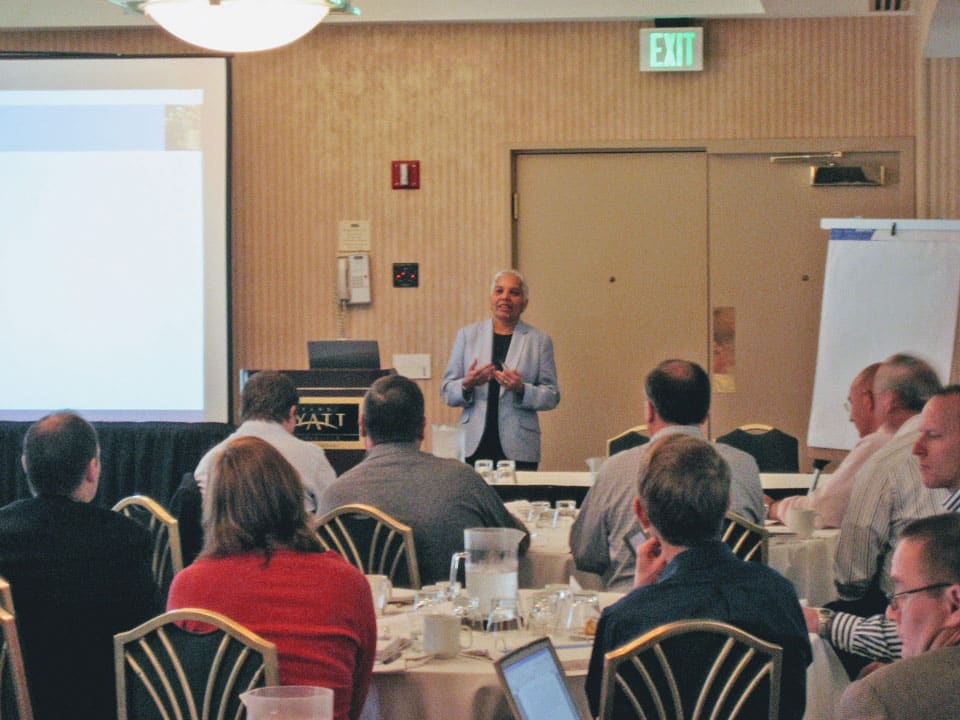The Power of Storytelling: Enhancing Leadership Communication

“Let us be lovers, we’ll marry our fortunes together. I’ve got some real estate here in my bag. So we bought a pack of cigarettes and Mrs. Wagner’s pies and walked off to look for America.” – Paul Simon
Those are the first few lines of a memorable song, America, which tells a great story. Whenever I hear the closing lines, “Counting the cars on the New Jersey Turnpike / They’ve all come to look for America,” I am reminded of the summer trips I took from Pittsburgh, where my husband and I were immigrant graduate students, to New Jersey, where my cousin lived, and traveled the same turnpike. Stories can draw you in, hold your attention, and make the experience your own.
I am a huge admirer of singers who are great storytellers like Paul Simon. Their success is partly attributed to their ability to tell stories that linger in our hearts and minds after so many decades. My favorites, The Beatles, have many songs, such as Eleanor Rigby and She’s Leaving Home, that are storytelling masterpieces.
Humans have been telling stories from time immemorial. We understand our history through visual and oral storytelling. They go as far back as 45,000 years, as evidenced by the oldest cave art found on Sulawesi, an Indonesian island.
Written storytelling started in 700 BC with the Epic of Gilgamesh and Homer’s Iliad. My birthplace in India has a rich oral, visual, and written storytelling history. Wikipedia says, “The Vedas are some of the oldest extant texts in India. The Vedic period, lasting from about 1500 to 500 BCE, contributed the foundations of several cultural aspects of the Indian subcontinent.” We all know and love Aesop’s Fables. According to worldhistory.org, they were written by a formerly enslaved Greek in the late to mid-6th century BCE.
Well-narrated stories evoke strong feelings in the audience and create a deep connection with the storyteller. In one of the most-watched TED Talks, “The Power of Vulnerability,” Brené Brown calls herself jokingly a “researcher-storyteller” and explains how the event planner felt “researcher” may sound boring, but a “storyteller” would appeal to many people.
Everyone understands stories, and they are excellent communication vehicles. Visual storytelling has no language barriers. Written narratives help us live through the experiences of the characters over and over again. When I wrote Leadership Lessons with The Beatles, I included the stories of leaders whose lives highlight the messages I conveyed in each chapter. I also had accounts of my own experiences.
The 2014 Guardian article, “Science of storytelling: why and how to use it in your marketing,” discusses an informal study of business school students giving a pitch. It says, “Only one in 10 students used a story within his or her pitch while the others stuck to more traditional pitch elements, such as facts and figures. The professor then asked the class to write down everything they remembered about each pitch: 5% of students cited a statistic, but a whopping 63% remembered the story.”
A London School of Business research found that information delivered just with statistics was retained at a 5 to 10% level. When the statistics were combined with an image, the retention jumped to 25%. The most significant retention―65-70%―happened when stories were used to convey the same information.
There are many opportunities to use storytelling in leadership communication. Here are two examples:
- Why we need intelligent failures
In a 2023 speech at the Forbes Future of Work Summit, Prof. Amy Edmondson, Novartis Professor of Leadership & Management at Harvard Business School, spoke about the science of failing and why we need intelligent failures, the kind that doesn’t produce the results you want when you are experimenting with many different ideas. She told the story of Thomas Alva Edison, the famous inventor. In response to a remark, “Isn’t it a shame that with the tremendous amount of work you have done you haven’t been able to get any results?” Edison responded with, “Results! Why, man, I have gotten a lot of results! I know several thousand things that won’t work.”Would anyone who heard Prof. Edmondson’s speech ever forget about intelligent failures?
- Connecting the Dots
In his 2005 commencement speech at Stanford University, Steve Jobs, the founder of Apple Inc., had three stories to tell. One of them has to do with connecting the dots. Jobs talked about his life and how he learned calligraphy at Reed College, which later helped him build the beautiful typography that is the hallmark of Apple computers.He said, “You can’t connect the dots looking forward; you can only connect them looking backward. So you have to trust that the dots will somehow connect in your future. You have to trust in something — your gut, destiny, life, karma, whatever. This approach has never let me down, and it has made all the difference in my life.”
Anyone who heard or read his commencement speech later is bound to remember that advice.
How to Become a Good Storyteller
How does a leader become a good storyteller? Practice―both writing and speaking. Write blogs. Find a safe space, such as Toastmasters, to practice public speaking.
Use the following tips to get the maximum impact with your stories:
- Know your audience.
Who are you writing for? Who are you speaking to? What motivates them? Do your homework on this before you deliver your message. Use informal conversations with your team (Management by Wandering Around or MBWA) to become knowledgeable. Tailor your storytelling for the specific audience. For example, the message to your immediate reports will likely differ from the one delivered to all the team members. - Keep your story focused on the message you want to deliver.
Use the “golden thread” approach to have a theme that runs through the entire body of speech or writing. Have a central message supported by an introduction, arguments, and conclusion. - Maintain your authenticity.
Speak or write from your experience. The audience is likelier to relate to your personal story and connect with your message. Personal experiences come across as sincere. - Be situational.
Your story should fit the context in which it is used. How you persuade your team to get behind a vision differs significantly from the message you send when expressing sympathy and support during a difficult time. - Make it interesting.
A story with a challenging situation and how it was overcome is more attention-grabbing than one without. The audience better understands who you are with such a story. The key is to deliver it with humility and not come across as someone with all the answers. A narrative with an element of surprise is more memorable than one that is prosaic. - Be credible.
Avoid telling stories that are not backed by data. They can come back to haunt you. While the audience may not remember all the statistics, adding them to your story gives you credibility. - Practice.
For a message that is given orally, write it out, and practice delivering it. For a written one, write a draft and be prepared for several rewrites until you have a well-crafted story to tell.
Conclusion
“No one ever made a decision because of a number. They need a story.” – Daniel Kahneman
Storytelling is a great way to connect with your audience. With practice, you can become an excellent one.
Written by Shantha Mohan.
Have you read?
Best Fashion Schools In The World.
Best Business Schools In The World.
Best CEOs And C-Suite Executives In The World.
World’s Most Influential and Innovative Companies.
World’s Best Hospitality And Hotel Management Schools.
Ready to join the CEOWORLD magazine Executive Council– Find out if you are eligible to apply.
Bring the best of the CEOWORLD magazine's global journalism to audiences in the United States and around the world. - Add CEOWORLD magazine to your Google News feed.
Follow CEOWORLD magazine headlines on: Google News, LinkedIn, Twitter, and Facebook.
Copyright 2025 The CEOWORLD magazine. All rights reserved. This material (and any extract from it) must not be copied, redistributed or placed on any website, without CEOWORLD magazine' prior written consent. For media queries, please contact: info@ceoworld.biz








